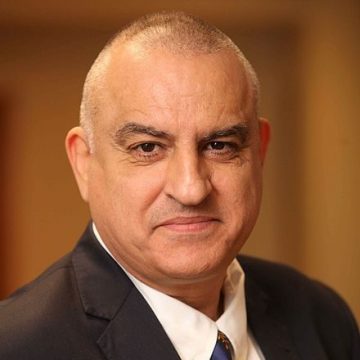Israel must fight until the military capabilities and leadership of Hamas and the other militant organizations in Gaza are destroyed.
On Saturday morning, October 7, 2023, Israel was surprised by a Hamas attack. The terrorist organization managed to plan, train, and carry out a synchronized surprise strike, and IDF soldiers found themselves completely inferior to the flow of forces and the daring of Hamas. Although we do not yet have all the details, Hamas built very effective offensive operational capabilities. Hamas operated in a coordinated manner in a few locations, penetrated the Gaza barrier without opposition after blinding the control systems, overcame the second line of defence by taking over IDF camps, and carried out a killing spree while abducting soldiers and civilians, who were taken to Gaza. It also captured military equipment and transferred it to the Gaza Strip.
As of now, Israel is fighting on various fronts: Gaza, Lebanon, Hezbollah and Palestinian terrorist organizations in Lebanon, Shi’ite militias from Syria and western Iraq, terrorists from Judea and Samaria (a.k.a. the West Bank), Iran, and the Houthis in Yemen. All of them are components of the resistance axis led by Iran; provided, supported and guided by Iran. Israel is focusing on the Gaza front. Still, it must be ensured that the enemy internalizes the readiness of the IDF forces to launch an attack on Lebanon should Hezbollah launch a challenge. The leaders of Hezbollah and Lebanon understand the devastating implications should fighting extend to Lebanon.
The government has drafted very clear objectives of the war that can be translated into military missions. IDF’s combat objectives are to eliminate Hamas leadership (military and political) while destroying all the military capabilities of Hamas and other Palestinian terrorist organizations in the Gaza Strip as well as their governing capabilities, releasing all the hostages, and assuring that the Gaza Strip will not be a threat to Israel anymore.


One of the goals the Israeli government set for the war, which it conveyed as a political directive to the IDF and other security organizations, is the destruction of Hamas’ military and governmental capabilities; there is no room for equivocation[BM1]. We must erase any public expression of Hamas ideology. There will be those who will continue to adhere to this ideology – and that cannot be prevented – but war must be declared on every manifestation of it, and not only conducted through kinetic means.
Therefore, we must set a goal of de-Hamasification of Gaza, and later of Judea and Samaria. Just as it took many years to cleanse Germany of the remnants of Nazi rule, we too must be ready and willing for this long and arduous task. Achieving this goal will not be easy and will require a years-long military, political, educational, economic and legal struggle. But if we are resolute and unwavering, we shall achieve our goal. We should aspire to secure an internationally agreed-upon consensus, but if such support is notwithstanding, Israel should strive to accomplish this end by itself.
Hamas as a movement, its people, its ways, and its actions cannot be judged and examined in the light of existing laws. If we desire life, then the movement and its spirit must be uprooted and eradicated. We must act with determination and in the spirit of the free world in its war against Nazism. It is not possible to eradicate an ideology from hearts and minds, but it is possible to influence society. This is what happened in Germany, and this is what must happen with Palestinian society.
The State of Israel and the people of Israel have known many crises and have withstood difficult times. Israel can emerge victorious this time, too. It will be costly, but a historic opportunity has been created here to reshape the Palestinian and regional arenas. Israel must not repeat past mistakes by settling for a weakening of the terrorist organizations and hurrying to reach a ceasefire. Israel must fight until the military capabilities and leadership of Hamas and the other militant organizations in Gaza are destroyed. International pressure to reach a ceasefire will come.


The main challenge in the Gaza Strip will be to reduce the security risks faced by Israel. Once the war is over, Israel’s military and security forces will continue an ongoing campaign aimed at completing the de-Hamasification of the Gaza Strip by eliminating terrorists who refuse to lay down their weapons and destroying Hamas’ military and governmental infrastructure. At the same time, a mechanism for the civil management of the territory and its population will be required. The first stage will necessarily focus on the immediate needs of the population, especially food, water, and basic health and sanitation services. Later, more complex needs will need to be addressed, such as education, employment, advanced health services, the environment, communications, infrastructure, etc.
The emergence of local leadership that will be acceptable to the majority of the population is unlikely. Therefore, an international support package is required. The best way would be in the form of a trustee regime, whose composition will need to be debated. It should include elements from neighbouring Arab countries, belonging to the more pragmatic camp led by Egypt and Saudi Arabia and supported by the United States.
This trustee regime will assume responsibility for addressing the immediate civilian needs of the population and will manage the territory while creating the conditions for the development of local leadership. Thousands of Palestinian Authority employees who are not affiliated with Hamas can be used as the foundation for an effective civilian technocratic regime. This is a process that could take many years.
Building a Palestinian civil-technocratic regime in Gaza should be a model for Judea and Samaria (a revitalized Palestinian Authority – as defined by President Biden in his article in The Washington Post). The administration apparatus in Gaza will operate independently of the existing one in Judea and Samaria. The idea of dividing Judea and Samaria into several separate civilian administrative zones should be considered. The overall security responsibility will remain in the hands of Israel, thereby ensuring complete operational freedom of action. The security forces of the existing PA will be dismantled and equipped to enforce law and order without any offensive capability. Past experience shows that any paramilitary capability held by the Palestinians becomes an offensive military capability. For example, the existing commando units of the Palestinian Authority, built with American support, training and equipment, have offensive capabilities. These units may act against Jewish communities in Judea and Samaria and even the State of Israel.
If the international trusteeship succeeds in building a well-functioning civilian administration in the Gaza Strip, then it will be possible to adopt the same model in Judea and Samaria as well, while examining the possibility of dividing the territory into several separate civil administration zones. The proposed format could become the infrastructure for a Palestinian federation which would include Gaza and the cantons in Judea and Samaria.
The new Palestinian administrative structure should be incorporated within the framework of the new regional architecture. It might evolve into a Jordanian-Palestinian confederation. The chances of this happening may increase if the countries of the region, together with Israel, and with the support of the United States, return to a normalization process between Israel and the Arab states in the region, with an emphasis on Saudi Arabia.











